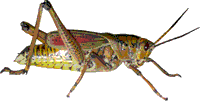Entomology Collections, General

Entomology Papers from Other Sources
Document Type
Article
Date of this Version
2015
Citation
Environ. Entomol. 44(2): 330–337 (2015); DOI: 10.1093/ee/nvu063.
Abstract
The pupal parasitoids, Spalangia cameroni Perkins and Muscidifurax raptor Girault and Sanders, can be purchased for biological control of house flies Musca domestica L. and stable flies Stomoxys calcitrans (L.) (Diptera: Muscidae). Little is known about the odors involved in host-seeking behavior of these two species, so odors associated with house flies were investigated in the laboratory using a Y-tube olfactometer. Odor stimuli from house fly host puparia, larvae, pine-shavings bedding with horse manure, and developing flies in the pine-shavings-manure substrate were evaluated in bioassays using the two pteromalid species. In choice tests, naı¨ve female S. cameroni were strongly attracted to odor from the substrate containing house fly larvae and secondarily from the uninfested substrate and substrate with puparia versus humidified and purified air. This species also selected the substrate with larvae versus the substrate with the house fly puparia or uninfested substrate. Muscidifurax raptor was attracted to odor from the substrate containing puparia, washed puparia, and substrate with puparia removed. The data suggest that coexistence between the two pteromalid parasitoids, S. cameroni and M. raptor, might be promoted by different host-seeking behavior.


Comments
U.S. government work.